The medicinal and psychoactive effects that we associate with marijuana are caused by unique chemical structures called cannabinoids found in the actual plant. To date, there have been 86 cannabinoids identified in nature and others have been synthesized chemically. In this article we will go through all the active ingredients of medical marijuana
The major psychoactive ingredient in marijuana is delta-g-tetrahydrocannabinol, commonly referred to as THC (although other naming systems refer to it confusingly as delta-t-THC). Other cannabinoids, in addition to THC, have medicinal or psychoactive elements.
Cannabidiol (CBD), cannabinol (CBN), cannabavarin (THCV), cannabigerol (CBG), cannabichromene (CBC), delta-8-THC, cannabicyclol (CBL), cannabitriol (CBT), and cannabielsoin are among the many different naturally-occurring cannabinoids.
Most are known to have psychoactive and/or pharmacological properties just like many other synthetic cannabinoid analogs.
THC
Because of delta-9-THC’s psychoactive nature in marijuana, it is regularly used to measure the herb’s potency. THC typically occurs in concentrations of less than 0.5% for inactive hemp, 2 to 3% for marijuana leaf, and 4 to 20% for higher-grade marijuana.


In seedless buds, known as sinsemilla, you’ll find the highest concentrations of THC in the plant at 10 to 20% or more. Higher concentrations of THC can be found in extracts, tonics, and hashish (concentrated cannabis resin).
Oral doses of THC range from 2.5 to 20 milligrams for therapeutic purposes. A regular joint (1 gram of 2.5% leaf or 0.5 grams of 5% higher-grade leaf) usually has 25 milligrams of THC. Over half of this amount is generally destroyed by combustion or is lost in side-stream smoke.
Around 15 to 50% of the THC in a typical marijuana joint actually gets to the bloodstream, making the actual inhaled dose closer to 3 to 12 milligrams.
Looking for high quality seeds? Check out our seed bank to buy high-quality seeds for higher yields.


Buy quality marijuana seeds
- We ship daily to all U.S. states for FREE!
- Our seeds are guaranteed to germinate
- Consistent heavy yields
- Guaranteed delivery
- Get 24/7 grow support
THC will not naturally occur in its active form in the cannabis plant. Instead, it occurs in an acidic form called tetrahydrocannabinolic acid or THC acid (THCA). When burned in a cigarette or heated in cooking, the THCA is rapidly converted to active THC in a heat-propelled reaction called decarboxylation.
Unlike THC, we have very little knowledge of THCA. We do know that it is not psychoactive, but it has been discovered to have immune-modulatory properties akin to other cannabinoids.
Eating marijuana raw will not produce any strong psychoactive effects because the THCA is essentially inactive. As marijuana ages, however, some of the THCA undergoes decarboxylation. The marijuana resin in hashish usually contains very high levels of active THC.
CBD
CBD is the next most common cannabinoid and is very prevalent in hemp varieties of cannabis. CBD actually lacks any noticeable psychoactive effects and does not really interact with the body’s cannabinoid receptors.


Despite that, plenty of evidence is starting to show that CBD has valuable medicinal properties. It works in concert with THC, augmenting its medical effects and moderating its psychoactive effects. Some researchers think that CBD has anti-psychotic properties which tend to reduce anxiety and panic reactions to THC.
It is also considered to improve wakefulness and to supplement THC’s activity against pain and spasticity. Pretreatment with CBD in mice nearly tripled the levels of THC in their brains which is an indication that it can increase the action and effectiveness of other drugs. Cannabinoids definitely work together to provide the desired effect.
If taken by itself, CBD has anti-inflammatory anti-anxiety, anti-epileptic, sedative, and neuroprotective properties. It’s also quite a powerful anti-oxidant and can protect against chemical damage due to oxidation.
Lab and animal tests have suggested that CBD could even protect against the incurrence of the following diseases: diabetes; certain types of cancer; rheumatoid arthritis; brain and nerve damage as a result of a stroke; alcoholism; Huntington’s disease; and even prion infections like “Mad Cow.” Other evidence suggests that CBD is biphasic, meaning that its effectiveness diminishes if the dose is too high or too low.
Download my free marijuana grow guide and start growing high quality strains
CBD is one of the major ingredients in Sativex, the cannabis spray the UK-based GW Pharmaceuticals is developing. The spray contains equal parts CBD and THC and has been approved for the treatment of Multiple Sclerosis in Canada.
GW is at the forefront of CBD research and has plans to study its effectiveness in treating arthritis, inflammatory bowel diseases, psychotic disorders, and epilepsy.
CBD and THC acid (THCA) are produced simultaneously. In the marijuana plant, a cannabinoid called cannabigerolic acid is the precursor for both CBD and THCA. Each cannabinoid is produced by a different enzyme that acts on cannabigerolic acid.
Seeing as how CBD and THCA come from the same precursor, it’s hard to find plants that have a high level of both. Hemp plants tend to lack the enzyme that produces THCA and, so, CBD is often very prevalent.
Unfortunately, most marijuana that’s sold to consumers has significantly lower levels of CBD because growers tend to selectively breed out the CBD enzyme to produce more THC. Now that we know so much about the benefits of CBD, you might start seeing plants with higher levels of CBD in the future.
Back to top
CBN
The third most common cannabinoid is CBN, which is more or less a byproduct of the chemical breakdown of THC. CBN lacks the strong psychoactive and medicinal qualities of THC and is usually found in degraded or poorly-preserved marijuana.


Although cannabinoids get all the press, marijuana does contain over 100 terpenoids (wiki) which are aromatic chemicals that can also be found in pine trees, citrus flora, and other odoriferous plants.
Terpenoids produce the unique aroma and flavor of marijuana, but many researchers believe that terpenoids might have significant medicinal effects. In comparison to the cannabinoids, little is really known about terpenoids in cannabis.
You’ll find more information about them in the Growing Medical Marijuana section
Flavonoids
Cannabis also has over 20 flavonoids which are chemicals common to most plant life.
Some flavonoids (known as cannaflavins) are exclusive to cannabis.
Most flavonoids are considered to have anti-inflammatory and antioxidant properties and could help prevent cancer and other major diseases.


Marijuana-using veterans have reported different highs and medical effects for different types of cannabis. This effect is largely produced by the different chemical concentrations of cannabinoids, terpenoids, and flavonoids in every different type of marijuana.
Want to grow start growing your own medical marijuana? Check out my marijuana seedshop for a wide selection of top-quality seeds. We ship all over the United States.
Download the Free Harvesting Guide to learn more about when and how to harvest your Marijuana plants
FAQ about medical marijuana ingredients
How much THC does a regular joint have?
A regular joint (1 gram of 2.5% leaf or 0.5 grams of 5% higher-grade leaf) usually has 25 milligrams of THC.
How does CBD helps with anxiety?
Some experts believe: CBD has anti-psychotic properties which tend to reduce anxiety.
What is CBN?
CBN is the byproduct of the chemical breakdown of THC. CBN lacks the strong psychoactive and medicinal qualities of THC and is usually found in degraded or poorly-preserved marijuana.
Thanks for reading. Please leave comments or questions below and don’t forget to download my free grow bible.
Robert
Need a New York or California Medical Recommendation? Try our partner, NuggMD! They are fast, easy, 100% online and you won’t be charged unless you’re approved by the Doctor.
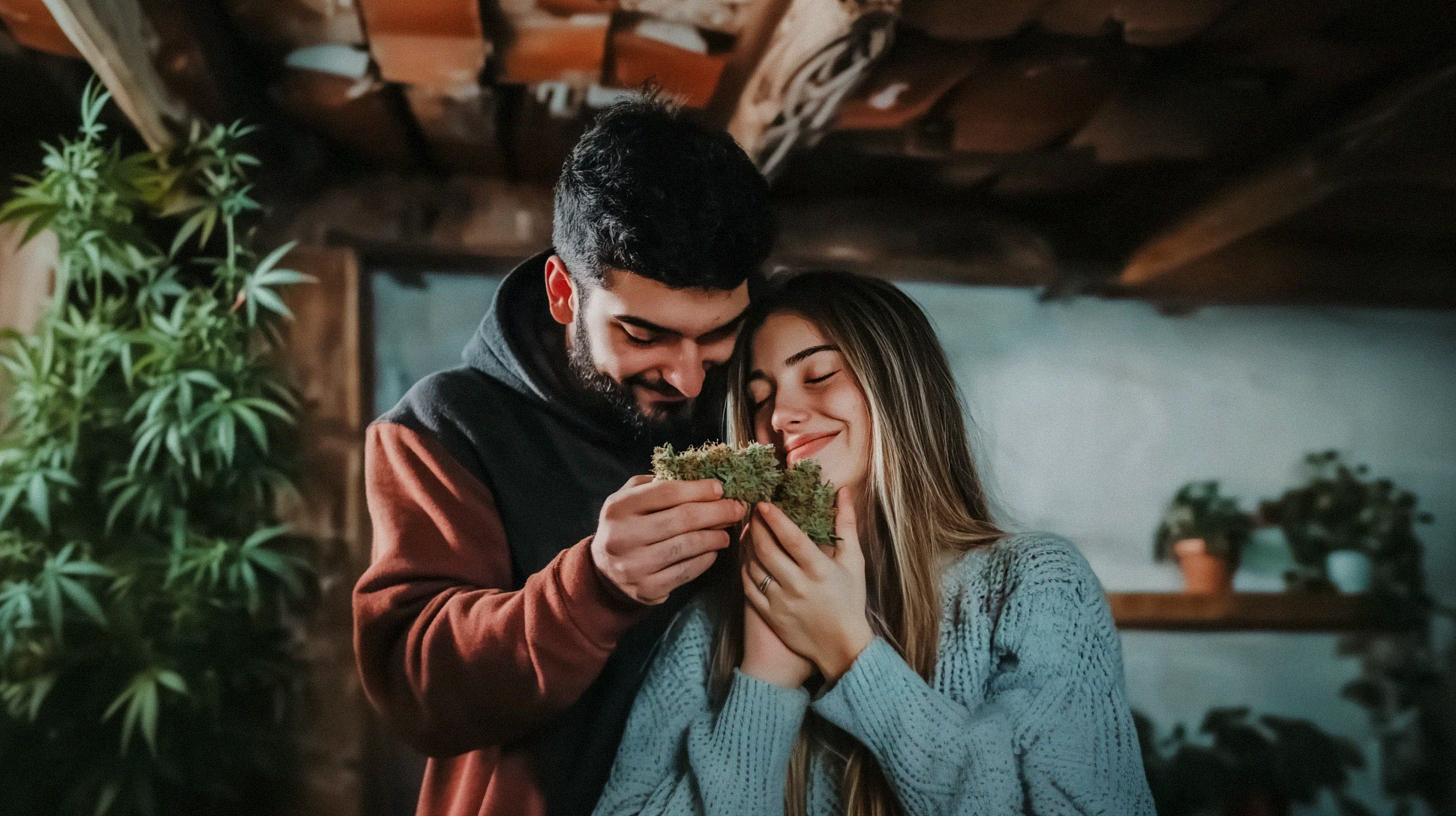
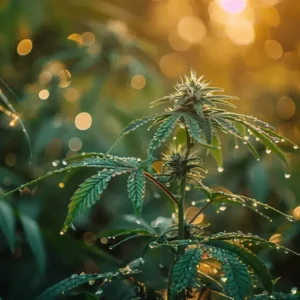
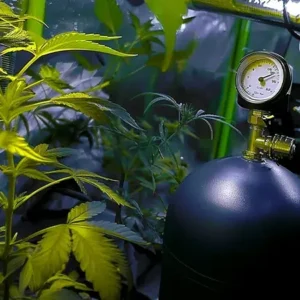
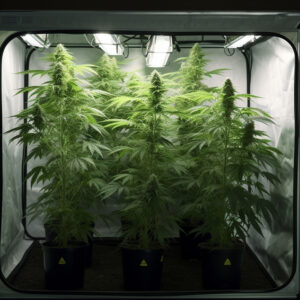
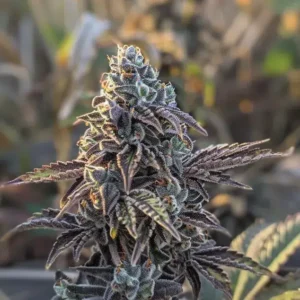
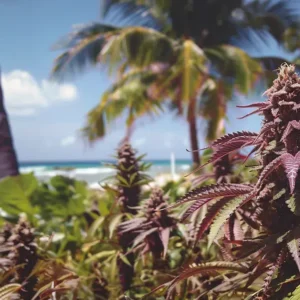
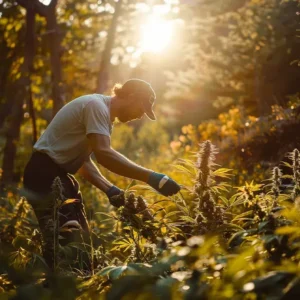
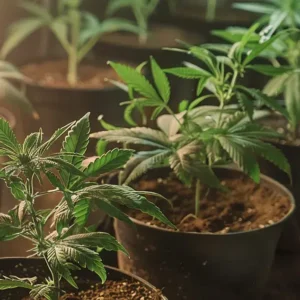
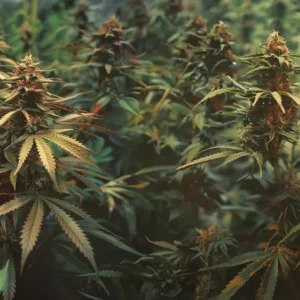

I understand that scientist & other so called gov. types think marijuana is so addictive. It is to some maybe., but I’d rather people that do drugs would do marijuana & nothing else. I’ve smoked pot for 46 years. I just quit until yesterday for 3 months. I managed to be in a state where it’s legal. I haven’t been getting high like I’m use to. Probably the same type pot isn’t doing it for me anymore. Well that got me tore up. I’ve quit for a few months at a time before to get a job or whatever. I don’t have withdrawals. I do Jones alittle bit, but nothing really bad. I’m sure some people don’t have it really bad. I bet if the truth were told, that alcohol withdrawal is much harder than pot ever thought of being. Seen it to much. I’ve been drunk & high and I know I’d rather be high on pot than drunk on whiskey or beer. Beer kills alot of people too every year. It needs to be legal in every state. I’m 66 and I’ve smoked alot longer than I haven’t. I don’t intend to stop for good anytime soon or I may. Who knows. I cast my vote for legalization everywhere.
Hhaahahahaahahahahhahaahahahahahahahah
So help
I’m new to this medical marijuana information. I live in Nevada, so I can buy it at one of many stores in the Reno area. My question is this: I have very signifant joint pain, shoulders, knees and feet (neurapathy).
One of the store recommended a Cannibus tincture 500 mg. Please advis if you think this would help or perhaps something else.
ps I also have trouble sleeping Thank you.
Research say that Marijuana is good for health. Most of the consultant prefer different kinds of marijuana for their patients. Not only marijuana, CBD oil is also good and there are lots of medicine company making CBD oil for commercial business.
[…] is that its effects are largely unpredictable. Depending on the state of your digestive system, the THC may or may not be well absorbed. In that event, the dose might be too much or too little. […]
[…] as a treatment for addiction withdrawal symptoms. There is some evidence from animal studies that cannabinoids can reduce the effects of opiate withdrawal (Yamaguchi). In the 19th century, cannabis was tested […]
[…] research on depression yielded less positive results. In one double-blind test of THC versus a placebo in eight depressed patients, THC failed to relieve depression and, in fact, half […]
[…] factor between the two different smokes is their principal active ingredients. Marijuana contains THC and other cannabinoids while tobacco contains nicotine. We’ve seen that there is evidence to suggest that THC and […]
[…] through until only the butane escapes, and the plant matter remains. This process allows for the cannabinoids to be removed from the marijuana by pumping the butane through the holding container. It becomes a […]
[…] certain drugs do degenerate naturally after some time, THC has a way of staying in your hair until you actually cut it […]
[…] a dime a dozen. The goal of combining your weed with a recipe for a pot brownie is to extract the THC from the butter or […]
[…] most popular way to cook with marijuana is by dissolving the THC in drinkable alcohol, butter, or oil. You can do this after soaking the marijuana in water. The […]
[…] strong ‘stoned’ feel, due to the high amount of CBN in the plant. Sometimes there is even more CBN than THC in the […]
[…] verses your everyday greenery, so even seeds, stems, and small leaves, can be baked down to get the THC […]
[…] for cultivation. The varieties grown south of the border tend to be of much lower quality with less THC and less potency than you’d find in domestic marijuana. Whether you grow a mediocre variety or a […]
[…] Dabs are a marijuana concentrate that are at least four times stronger than smoking a joint, delivering the high to users all at once rather than over time as with smoking. Dabs are brown or green and look thick and gummy, like hot wax. Users generally partake in dabbing by smoking through a modified bong, which leads to that immediate, intense high. Its potency is no surprise, given the fact that the product being smoked is comprised of sometimes higher than 95 percent THC. […]
[…] the amount of marijuana used, and how frequently you used marijuana all factor into how long the THC will remain in your […]
[…] prescriptionLike marijuana, Marinol has high levels of THC and, therefore, a legal prescription for it should be enough to account for the levels of THC in […]
[…] differences in the effects of Indica and Sativa strains come from varying levels of THC and CBD. Indicas naturally produce higher levels of THC, while Sativas instead produce high levels of CBD. […]
[…] drug tests check for the presence of drugs such as marijuana (THC), opiates, cocaine, amphetamines, methamphetamines, ecstasy, and PCP. It is supposedly more […]
[…] the amount of marijuana used, and how frequently you used marijuana all factor into how long the THC will remain in your […]
[…] is through smoking. It does not take that much equipment and is incredibly fast-acting. The THC in inhaled smoke reaches the user’s bloodstream in only a few seconds. After that, the effects […]
[…] healthier for the lungs. One issue with that assumption is that waterpipes usually absorb even more THC than they do carcinogenic compounds. That means that water pipes allow even more harmful smoke […]
[…] same variety can vary in potency. Generally, domestic marijuana contains a greater concentration of THC than Mexican variations which are usually grown outside and not for use as sinsemilla. Since the […]
[…] pollination. In addition to being vital for reproduction, it is the cannabis flower that contains THC and CBD, the two primary active ingredients, and the reason the plant is […]
[…] and fatigue. These beneficial effects have been confirmed in several recent clinical studies using THC and other cannabis extracts. Interest in this treatment has been particularly high in the U.K., […]
[…] is probably the best course of action. This is because blood tests tend to register positive for THC for only an hour or two after use while urine tests, which measure accumulated metabolites, can […]
[…] be used to detect marijuana. The most accurate option is blood testing, which measures the actual THC content in the bloodstream. Hair testing can also be used to test for marijuana use, but this […]
[…] years, researchers felt that disparate ratios of cannabinoids created marijuana’s variegated effects. Studies of modern marijuana, however, have shown that […]
[…] if someone is actually under marijuana’s influence. That’s mostly because they don’t measure THC, but, instead, non-psychoactive cannabinoid metabolites that are created in the liver and linger […]
[…] cannabinoids are well-known to have anticonvulsant properties, they have also been known to promote muscle […]
[…] of time. Furthermore, patients need to spend all of their waking hour under the influence of THC which most subject find mentally incapacitating. Randall claimed to have built up a tolerance to […]
[…] as a “panic reaction” which tend to affect inexperienced users particularly at high levels of THC. Although panic reactions fade fast, they can be frightening enough for some users to seek medical […]
[…] denied by U.S. authorities. A similar study is in progress in Europe. Some evidence suggests that THC (not CBD) inhibits the release of serotonin from blood platelet cells—a likely causal factor in […]
[…] studies have brought the analgesic action of cannabinoids to the forefront. Research has shown that THC and other cannabinoids actually inhibit acute […]
[…] study by Cunha, half of temporal-focus partial epileptics obtained complete relief of seizures with CBD at doses some 10 times greater than the amount typically found in a joint. Other studies with CBD, […]
[…] chemotherapy) started to take notice. A slew of research came after that showed marijuana and oral THC’s effectiveness in reducing nausea and vomiting associated with chemotherapy. By the early 1980s, interest had […]
[…] concern around marijuana’s connection to breastfeeding lies in the fact that THC is fat-soluble and a small amount of it gets into the mother’s breast milk. Studies have shown […]
[…] similar. Both are comprised by toxins that are known to be dangerous for the respiratory system. THC and other cannabinoids do not play a role in these dangers. The dangerous chemicals are non-psychoactive byproducts of […]
[…] THC might affect blood pressure, but not in any clear-cut and consistent pattern. It’s not uncommon for THC to produce modest increases in blood pressure for the first few minutes, followed by modest decreases after. Usually, THC causes a mild increase in blood pressure while lying down and a slight decrease while standing. This is not the case for everyone, however. […]
[…] someone else’s reaction. Most of the research surrounding marijuana ingredients has dealt with THC, but other cannabinoids, terpenoids, and flavonoids can have a major effect on how the drug is […]
[…] that THC causes chromosome and gene damage work off of outdated studies in the 1970s that have now been […]
[…] marijuana is more hazardous within the first two hours of acute intoxication when higher levels of THC are found in the blood (Drummer, […]
[…] is an oral spray with equal parts THC and CBD extracted directly from marijuana grown by GW Pharmaceuticals. Under the direction of Dr. […]
[…] drug companies have begun to explore many new synthetic drugs aimed specifically at targeting the cannabinoid receptors. Rimonabant functions as a kind of “anti-pot” drug by antagonizing or interfering […]
[…] resembles the effects of marijuana and is easily the best substitute. It basically consists of pure THC in oral capsules. The THC is synthesized chemically by an expensive patented process, then dissolved […]
[…] the early 1990s, researchers discovered that cannabinoids resemble a chemical that occurs naturally in the human brain, and that marijuana’s effects are […]
[…] uses chemicals known as cannabinoids to deliver its mind-altering messages to the brain. If you’ve heard of anything about marijuana, […]
[…] to popular belief, marijuana is actually a remarkably safe drug. Despite the fact that THC and other cannabinoids are the primary, active ingredients, there’s no study that suggests that its lethal. Other […]
[…] food products sold in grocery stores do have tiny amounts of cannabinoids, but they won’t create positive drug tests even in huge doses. This actually had once been a […]